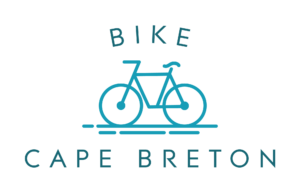I recently started riding a fatbike. Fatbikes are great for riding on certain terrains but they are not the best choice of bike for all circumstances. The fatbikes we offer are not top brandnames. They are beginner fatbikes that Canadian Tire offered as their version of a fatbike over the last couple of seasons. They nevertheless had good reviews which is why I decided to purchase them. What you get in a higher end fatbike is lighter tires and frame which make it easier to take your fatbike on longer treks if you are not used to riding them. If you just want to try it out on the Coastal Trail or on some gravel road touring then I wouldn’t worry that much about the weight factor. I haven’t tried a fatbike on the beach which is something I am looking forward to which might open up some possibilities when exploring larger beaches. A fatbike can be a good choice on a farm as bikes with narrower tires have more of a tendency to create ruts if there is any moisture in the field. The wider tires float better over fields or any terrain that is a bit boggier.
Of course, fatbikes have gotten a reputation for being good under winter riding conditions as they offer more traction. My experience has been that this is true when the show is not too icy, however, if there is ice and you don’t have studs there is a good chance you will go down like you would on any other bike. There are more winter driving situations where I would be more comfortable on a fatbike than on other types of bikes. Where you have groomed winter trails for snowmobiles I think you have a good surface for fatbiking. Some of the snowmobilers are protective of their groomed trails but the type of damage you might do on an ATV is not the same as a fatbike so I think these trails should be considered shared trails with fatbikes as well. In general if you can groom a trail in winter that will make it easier to traverse on a fatbike.
The fatbikes we have are 7 speeds with only one sprocket on the front so you only have one handle that you use to shift gears with. Not sure how universal this is on all fatbikes but it is something to consider for longer distances where you might like to have those extra front sprockets. The front sprocket is not as large as the largest sprocket on an 18 or 21 speed bike and is somewhere between a medium and small front sprocket. This is because you often want gearing that gives you more leverage to get up hills and through challenging terrain. If you plan on going a long distance on a fatbike, you can still cover alot of ground but it might take you a bit longer because of the limited amount of gears. On distances up to 15 km and above I would probably opt for a hybrid or mountain bike.
The last issue to address is the issue of bumpy terrain. You can take a fatbike over bumpy terrain and there will be some cushioning provided by the larger tires, but often a fatbike does not include front or rear shocks to absorb the bumps. Fatbikes are often what are called “hardtail” which simply means they don’t have shock absorbers on them except what is provided by the tires. If you intend to travel along more off the beaten path dirt roads and trails, you might consider using a mountain bike instead as you can probably go faster and enjoy the experience a bit more. If you are in danger of puncturing tires on the terrain you are riding on, keep in mind that the one of the biggest costs to assembling a fatbike is the rubber tires and if you puncture a fatbike tire prices can run you $200+ per tire where for a mountain bike you are more in the $40+ tire range. We don’t mind as much if you puncture a mountain bike tire, but puncturing a fatbike tire is significantly more costly to replace. Consider this when deciding on what type of terrain you want to take the fatbike on. Where there is evidence of broken glass or protruding sharp rocks, you might want to take particular care to avoid these terrains on your fatbike.

Comment test